Have you ever loaded up the car for a trip, glanced at your cat in their carrier, and wondered, “ Should I sedate my cat for a road trip? ” You’re not alone—many cat owners struggle with this decision before hitting the highway. Is medicating your feline friend the right choice for a long journey, or can a little preparation and patience go just as far? This guide delivers everything you need to know to make smart, caring decisions for your cat’s well-being and travel safety.
Curious if You Should Sedate Your Cat for a Road Trip? What Drives Responsible Cat Travel Decisions
- Considerations before sedating your cat for a road trip—balancing well-being, comfort, and travel safety.

"Is it ever in your cat's best interest to be sedated for travel? The answer is complex and requires careful consideration of all options."
Traveling with cats brings unique challenges, especially on a road trip . As a responsible cat owner, your primary goal is to ensure your feline’s comfort and safety while on the move. There are circumstances when using a cat sedative might feel like the best way to keep everyone calm, yet not every cat or situation calls for sedation. Factors such as your cat’s personality, previous travel experiences, and overall health are vital to consider. It's crucial to reflect on what will truly be safe for your cat , weighing the benefits and drawbacks of sedation or exploring cat sedatives alternatives before making a decision.
Ultimately, your choice should be about more than convenience; it’s about your cat's well-being and the journey ahead. Let's explore the critical concerns, medication options, and safer alternatives to help you make an informed decision.
Why Ask 'Should I Sedate My Cat for a Road Trip?': Common Concerns and Scenarios
- Common scenarios: long car rides, anxious cats, moving home, travel stress.
Many cat owners consider sedation during moves, lengthy car rides , or stressful events like visiting a new current home . If your cat shows distress during travel—constant meowing, trembling, or attempts to escape the carrier—sedation may seem like a possible solution. Other frequent concerns include relocating with an older cat or dealing with motion sickness. Whether you’re hitting the road for a cross-country adventure or just visiting family, you’ll likely encounter questions about how your cat will feel during transit.
Cats can react negatively to unfamiliar sounds, vibrations, or being confined in a cat box or carrier. It's not uncommon for travel to trigger anxiety, excessive grooming, or refusal to eat food and water . Addressing these issues up front can help prevent lasting trauma and ensure a safer, more positive road trip for both you and your furry companion.
Each situation is unique, so understanding your individual cat —their health, age, temperament, and past experiences—will guide your decision. Let’s break down exactly what you’ll learn to help answer the question, should I sedate my cat for a road trip?
What You’ll Discover About Whether You Should Sedate Your Cat for a Road Trip
- Key factors influencing the decision to sedate a cat for travel.
- Types of cat sedatives and their effects.
- Risks, side effects, and natural alternatives.
- Veterinarian perspectives and expert recommendations.
- Tips for safer, stress-free journeys with your feline friend.
By the end of this guide, you’ll gain crucial insights on when (and if) using a cat sedative is appropriate, side effects to watch for, and gentler options for making any road trip smoother. You'll also learn the importance of consulting with your veterinarian before giving your cat any medication—whether prescription, over-the-counter, or natural remedies —to minimize risk and maximize comfort for your pet.
Understanding Cat Sedative Options: Prescription and Over-the-Counter Choices
Overview of Cat Sedatives for Road Trip Preparation
- Prescription cat sedatives (e.g., gabapentin, trazodone, benzodiazepines)
- Over-the-counter and herbal sedatives
- How sedatives are administered for travel
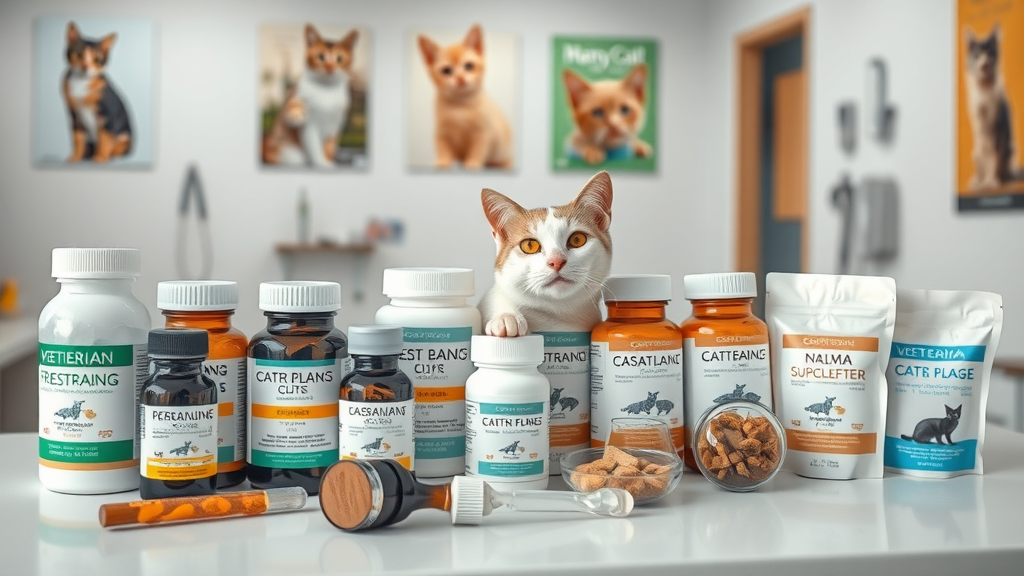
There are several cat sedatives available for road trip use, each with its benefits and potential side effect s. Gabapentin and trazodone are two common veterinary-prescribed options. These medications reduce anxiety and provide a calming effect, helping your cat cope with the unfamiliarity of a long car ride . Other options, such as benzodiazepines , also offer quick relief but aren’t suitable for every cat, especially those with specific health issues.
For cat owners looking for less pharmaceutical solutions, there are over-the-counter calming treats, herbal supplements, and natural remedies that aim to relieve mild stress on the journey. It’s important to recognize that these solutions work differently from stronger medications. Always discuss with your vet which cat sedative for travel is best for your cat. The right sedative and dosage will depend on your cat’s age, weight, pre-existing health conditions , and general temperament.
Most cat sedatives are administered orally, mixed with food, or as a treat before the trip. Always follow your veterinarian’s instructions carefully to avoid side effects such as lethargy, disorientation, or gastrointestinal upset.
Watching an expert veterinarian explain how a cat sedative works during a road trip can ease your worries. Typically, a cat will show signs of drowsiness, reduced agitation, and sometimes a calming effect after taking the right dose. The video would highlight monitoring your cat during travel for any unusual behaviors or reactions. If your cat appears excessively sleepy, confused, or cannot stand, these might be side effects requiring immediate attention.
Safety is paramount: Never administer a sedative that’s not approved by your cat’s vet, and always run a “trial dose” before travel to observe for any adverse reaction. Knowing how these medications affect your feline friend will prepare you for a smoother journey.
How Road Trip Anxiety Affects Cats: Signs and Symptoms
- Common anxiety behaviors during a car ride: meowing, drooling, panting, hiding
- How car ride stress can impact your cat's health
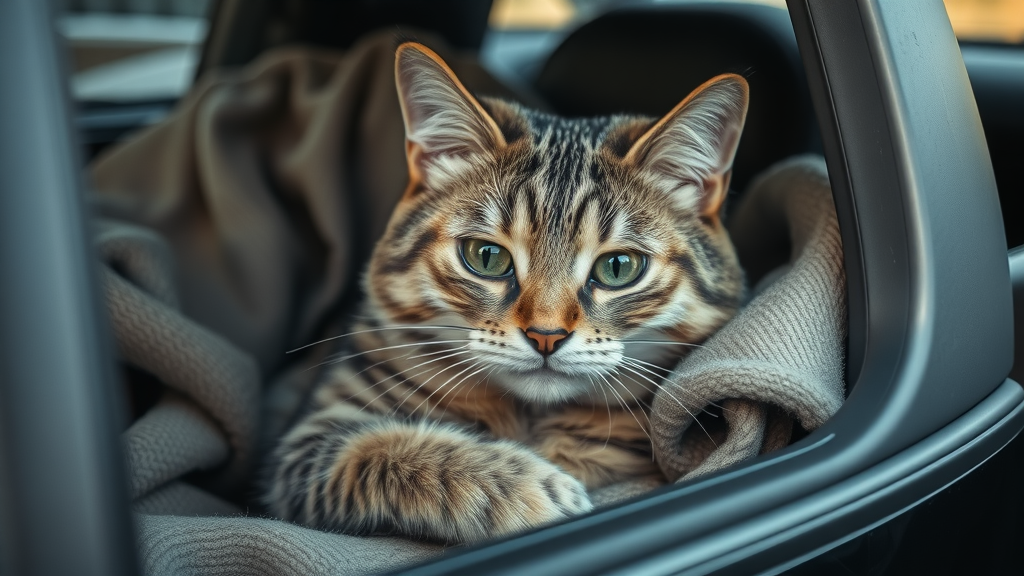
Cats are creatures of habit, and a road trip disrupts their comfort zone. During a car ride , many cats exhibit clear signs of stress: loud vocalizations, excessive meowing , drooling, open-mouth panting, attempts to hide in the cat carrier , or trembling. These anxiety signals indicate your cat is overwhelmed by the sights, sounds, and motion of travel.
If your cat suffers frequent motion sickness , you may notice vomiting, refusal to move, or lethargy, especially in a loose in the car environment (which is never safe). Chronic travel stress can impact your cat’s health, weakening their immune system, triggering behavioral changes, and making them more prone to illness after the trip. Recognizing these behaviors early allows you to address their needs proactively to reduce anxiety and prevent escalation.
"Even the calmest cats can become anxious during unexpected road trips—preparation is key."
Preparation and understanding are essential in managing your cat's comfort. By identifying stressors and knowing possible reactions, you can determine whether non-medical interventions or exploring cat sedatives should be your next step.
Are Cat Sedatives Safe for Road Trips? Evaluating Risks and Side Effects
| Sedative Type | Benefits | Risks | Typical Side Effects |
|---|---|---|---|
| Gabapentin | Reduces anxiety and agitation | Drowsiness, ataxia | Excessive sedation, wobbliness |
| Trazodone | Mild sedative effects | Possible paradoxical agitation | Lethargy, GI upset |
| Benzodiazepines | Fast-acting calming | Rare allergic or paradoxical responses | Drowsiness, appetite changes |
| Natural remedies | Mild, safe | May not work for all cats | Very mild or none |
Understanding Side Effects of Cat Sedatives for Road Trips
- Lethargy, confusion, changes in behavior
- Rare allergic reactions
- When side effects signal danger
While a cat sedative for travel can make journeys easier, no option is without side effects . Lethargy and confusion are common outcomes but should be monitored. At times, a cat may appear unresponsive or act out of character, which could signal a deeper issue or side effect that requires pulling over and contacting your vet. Rare allergic responses may manifest as facial swelling, labored breathing, or vomiting—these are emergencies.
If your cat seems excessively sleepy or refuses food and water , or if symptoms escalate such as severe ataxia (wobbliness) or agitation, stop administering the sedative and consult a veterinarian immediately. It’s essential to trial the medication before the actual trip to understand how your cat will react, and to always have your vet’s emergency contact information on hand.
Remember, adverse side effects are less likely when you follow professional guidance and adjust the dose for your cat’s individual physiology, health, and age.
Natural Remedies vs. Cat Sedatives: Gentler Alternatives for Travel
- Pheromone sprays and diffusers
- Calming treats and supplements
- Desensitization and crate training
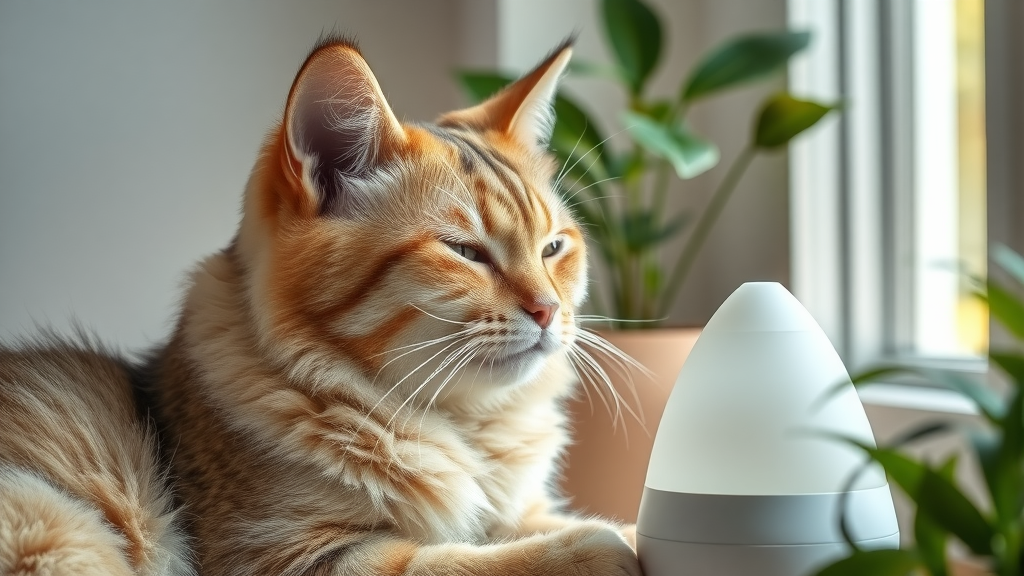
For cat owners seeking natural remedies that minimize potential side effects associated with prescriptions, there are options worth exploring. Feline pheromone sprays or diffusers mimic calming natural scents, helping cats feel more secure during both short and long car rides. Many owners also report benefits with calming chews, herbal supplements, and gentle desensitization techniques such as crate training before the actual trip.
"Natural remedies can offer gentle relief but may be less reliable for severe anxiety."
While natural remedies do not usually produce negative side effects , their efficacy can vary based on the individual cat . For minor travel stress, these solutions may suffice, but for cats with more intense anxiety or a history of severe reactions during car rides, veterinarian-approved medication may be necessary. Always consult your vet on the right approach—especially if your cat has underlying medical conditions .
Popular Anxiety Medications for Cats: Pros, Cons, and Veterinary Insights
Veterinarian-Recommended Anxiety Medications for Cats During a Road Trip
- Why vets sometimes prescribe anxiety medications for cats—efficacy, safety, and cases for use
- Consideration of underlying health conditions and age
Veterinary experts often recommend anxiety medications for cats when other comfort solutions fail to reduce stress-related behaviors. Gabapentin and trazodone are frequently chosen due to their proven calming effect and established safety profiles when dosed correctly. In some rare situations, a veterinarian may recommend a different cat sedative for travel, but only after ruling out medical conditions that could worsen with medication.
Consult your vet about your cat's age, as older cats and kittens metabolize drugs differently. If underlying health conditions like kidney, liver, or heart problems exist, the risk of side effects increases, making professional oversight fundamentally important. Never use your own anxiety medication for your cat—this can be fatal.
If your cat falls into a high-risk category for medication (very young, senior, or medically compromised), prioritize non-pharmaceutical interventions or book an appointment to develop a tailored plan.
Best Practices: Preparing for a Road Trip with Your Cat (With or Without Sedation)
- Crate acclimation and comfort tips
- Essential items to pack
- Feeding and hydration before travel

Whether or not you use a cat sedative , preparation is your best tool. Start by making the cat carrier inviting: line it with a favorite towel or favorite toy , and let your cat explore it days before the journey. Gradual crate training helps reduce anxiety associated with confinement. During the road trip, avoid letting your cat roam loose in the car , which increases the risk of injury.
On packing day, include your cat’s regular food and water dishes, a portable litter box , medications, vet records, and a cozy blanket. Use pheromone sprays for a calming effect inside the carrier. Feed smaller portions a few hours before departure to reduce nausea. Never open the carrier unless the car is stopped and secure, and schedule regular breaks for water and litter box needs.
If you plan to try a sedative for travel , run a practice session several days before the actual road trip to see how your cat reacts. Always stick to vet-recommended dosages and timing.
Watching best practice travel videos can teach you everything from safely securing the cat carrier to calming music playlists, and creative ways to keep your cat engaged with their favorite toy . Some demonstrate methods for offering water, handling roadside emergencies, or using pheromone sprays for a calming effect.
When You Should Not Sedate Your Cat for a Road Trip
- Pre-existing health conditions
- Senior or very young cats
- Lack of veterinary supervision
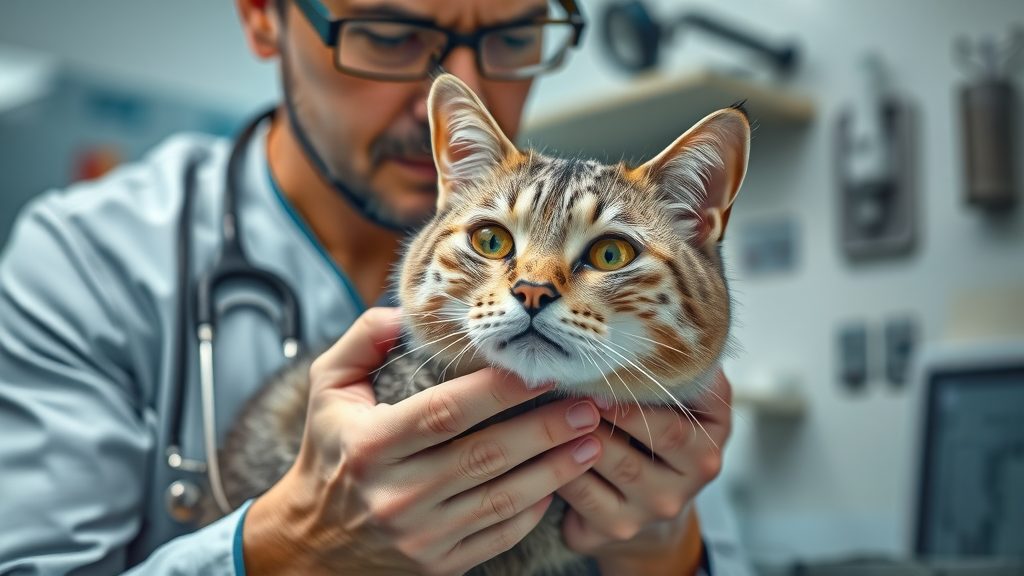
Some situations make cat sedatives inappropriate or dangerous. Avoid sedating if your cat has medical conditions such as heart disease, kidney or liver dysfunction, or respiratory problems. Older cats metabolize drugs differently, increasing their risk for toxic reactions and severe side effects. Kittens are also more sensitive to medication.
Never give your cat medication—prescription or over-the-counter —without veterinary oversight. Improper dosing, drug interactions, or unrecognized allergies can be catastrophic. For these cats, focus on natural remedies or behavioral acclimation techniques, and always consult your veterinarian if you’re unsure whether a cat sedative for travel is safe.
If you cannot reach your regular veterinarian, delay your trip, or use non-medicinal calming techniques until a professional assessment can be made. Your cat’s safety should always come first.
Consulting Your Veterinarian: Expert Advice on Cat Sedatives and Travel
- Importance of professional assessment before administering any cat sedative
- How to discuss options, dosage, and alternatives with your vet
Consulting your veterinarian is not optional; it’s the cornerstone of safe, effective anxiety management for your feline. Bring up your travel plans well in advance, letting your vet assess your cat’s health conditions , temperament, and past experiences with medications. Share any concerns about side effects or possible drug interactions.
Ask your vet specific questions: What cat sedatives are recommended for a car ride given my cat’s unique profile? Are there behavioral or natural alternatives? What are the exact dosages and timing instructions? Inquire about running a “supervised trial,” and always have a written protocol for emergencies during the trip.
Good communication ensures both you and your veterinarian are confident in your cat’s custom travel plan. It also allows you to respond promptly if anything goes wrong.
People Also Ask: Should I Sedate My Cat for a Road Trip?
What can I give my cat to sleep for a long car ride?
- Overview of safe sedative options for sleep during travel
- Prescription vs. over-the-counter versus natural
Answer: The safest choices are those prescribed specifically by your veterinarian, tailored to your cat’s unique health profile.
For sleep and relaxation during a long car ride , veterinarians often prescribe gabapentin or trazodone , both of which are designed for animal use and have established safety records. While some over-the-counter calming supplements exist, their success is mixed, and it's safest to avoid giving your cat human medications entirely. Discuss all options with your vet in advance, especially if your cat is elderly or has medical conditions .
How to keep a cat calm for a long car ride?
- Tips for calming a cat without medication during a road trip
- Comfort, familiar scents, and acclimatization
Answer: Gradual crate training, pheromone sprays, and maintaining a soothing environment can reduce car ride anxiety.
Training your cat to view the cat carrier as a safe space before travel is one of the best ways to lower road trip anxiety. Incorporating familiar bedding or clothing with your scent, as well as their favorite toy , can be soothing. Pheromone sprays in the carrier or around the litter box offer a proven calming effect. Minimize loud noises and sudden movements, and keep the car temperature comfortable.
What sedative is good for cats when traveling?
- Types of sedative for travel and their effectiveness
- Veterinarian recommendations for cat sedative options
Answer: Gabapentin and trazodone are commonly recommended, but only under veterinary guidance.
Of all available cat sedative for travel options, gabapentin and trazodone have the best track records when prescribed by a vet and dosed specifically for your cat. There are other choices, such as benzodiazepines or natural remedies , but these are less reliable and may carry increased risk if unsupervised.
Is it safe for cats to get sedated?
- Factors influencing safety—individual health and proper dosage
- Risks of unsupervised or inappropriate use
Answer: Sedation is generally safe when prescribed, but not all cats are good candidates. Always consult your vet.
With correct professional oversight, the right cat sedative can make travel less stressful and safer. However, your vet must account for your cat's health conditions , age, and possible reactions before prescribing. Never use a friend’s medication or an over-the-counter product without a vet’s express approval.
Frequently Asked Questions: Should I Sedate My Cat for a Road Trip?
- Can I use human anxiety medications for my cat on a road trip? No—never give your cat human medications, as their bodies process drugs differently and serious side effects or death can occur.
- How far in advance should I test sedatives? Run a supervised practice dose at least one week before your trip to monitor for side effects or allergic reactions.
- Is sedation needed for short trips? Usually not. Most cats tolerate brief car rides better with natural remedies and crate training rather than sedatives.
- Are natural sedative options effective? They can be effective for mild anxiety and stress reduction, but severely anxious cats may need prescription options for safety.
- How do I monitor my cat’s health after sedation? Watch for excessive lethargy, appetite changes, difficulty breathing, or unusual behavior. Contact your vet immediately if these arise.
Weighing the Pros and Cons: Should I Sedate My Cat for a Road Trip?
- Recap of key risks, benefits, and alternatives when considering cat sedatives
- Importance of customizing travel plans to your cat’s needs
Choosing to use a cat sedative for a road trip demands thoughtful comparison. Weigh the risks of side effects and underlying medical conditions against the potential for a calmer trip and reduced feline distress. For many, dedicating extra time to crate training and gentle natural remedies is safer and just as effective. Always tailor your plan to the specific needs and history of your cat.
What matters most is that your travel plan prioritizes health, safety, and the unique sensitivities of your feline friend. When in doubt, consult your vet and err on the side of caution.
Caring for Your Cat on Every Road Trip: The Smart Next Steps
"Knowledge is the best travel companion—prepare with your cat's comfort and safety in mind."
- Further resources and links for cat-safe travel
- Encouragement to subscribe for expert pet care tips and product updates.
Ready for your next adventure?
Caring for your pet just got easier. Get expert advice, product tips, and pet wellness updates delivered monthly. 🐾 Sign up today and stay one paw ahead.
When considering whether to sedate your cat for a road trip, it’s essential to weigh the potential benefits against the risks and explore alternative methods to ensure your feline’s comfort and safety.
Understanding the Risks of Sedation
Sedating a cat can lead to various side effects, including lethargy, unsteadiness, and, in some cases, respiratory issues. The American Veterinary Medical Association advises against sedating pets for air travel due to these potential risks. ( starwoodpet.com ) While this guidance is specific to air travel, similar concerns apply to road trips, especially for cats with underlying health conditions.
Alternative Strategies to Reduce Travel Anxiety
Before resorting to sedation, consider the following approaches to help your cat feel more at ease during the journey:
-
Crate Training : Acclimate your cat to their carrier by leaving it open in your home, allowing them to explore and associate it with positive experiences. Feeding your cat inside the carrier can create a positive association. ( vcahospitals.com )
-
Pheromone Sprays : Products like Feliway mimic natural feline pheromones, promoting a sense of security and reducing stress. ( dailypaws.com )
-
Gradual Exposure : Start with short car rides to help your cat become accustomed to the motion and environment, gradually increasing the duration as they become more comfortable. ( cats.com )
Consulting Your Veterinarian
If your cat exhibits severe anxiety despite these measures, consult your veterinarian. They can assess your cat’s health and recommend appropriate interventions, which may include prescription medications like gabapentin or trazodone. It’s crucial to conduct a trial dose before the trip to monitor your cat’s response and identify any adverse effects. ( lanevet.com )
In summary, while sedation might seem like a straightforward solution for a stressful road trip, it’s important to consider the potential risks and explore alternative methods first. By preparing your cat through training and environmental adjustments, you can help ensure a safer and more comfortable journey for both you and your feline companion.
 Add Row
Add Row  Add
Add 



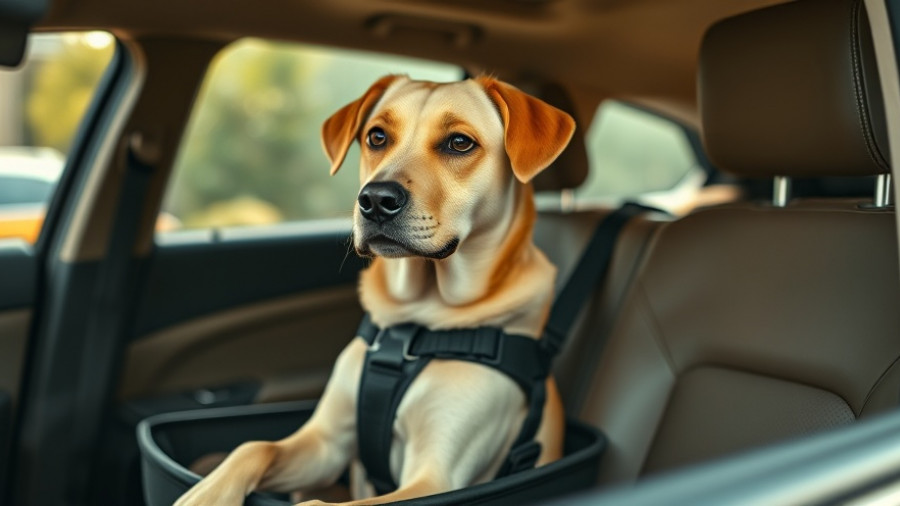
Write A Comment